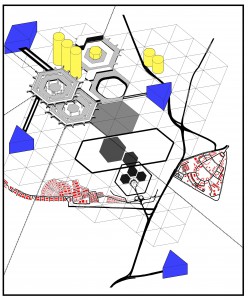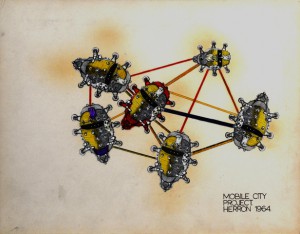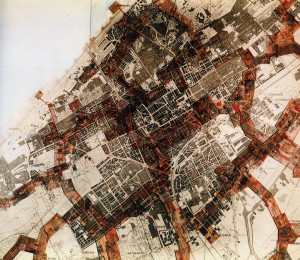The Temporary Future for Refugee
|
My thesis will explore a new housing typology, an improved design and planning methodology of temporary transitional settlement for refugee. With the constantly changing of national structures, resulting in wars, conflicts, bombing and so on, permanent architecture massive as in city scale can become temporary. These factual issues blur the original definition of temporary and permanent architecture. Regarding to this assumption, taking the Syrian Civil Crisis 2015 as the objective, I would like to select Berlin, the capital city of Germany, as the test case. According to the government offical statistic, untill October 2015, Germany has received approximately 800,000 refugees which urgently suggests a high demand for refugee settlement. The Flughafen Berlin- Tegel Airport, which claims to be one of the most efficient airports in the world. The main terminal building is hexagonal- shaped with an inner open square for vehicle drop off. The boarding gates are allocated outside the hexagonal rim which the function or program of the airport is efficiently decentralized. However, the airport is scheduled to be closed due to the completion of the new city airport, It would be a great opportunity for adaptive re-use. The existing main hexagonal structure suggests an architectural metabolism, a strong sense of infinite practicality which contains potential for future expansion. This idea allows additional plug- in interventions (shared utilities) in order to generate a new form of decent refugee living through density, functionality and flexibility in responses to the instant rise in population. Back in the 1950s, with the rise in theoretical concern of urbanism towards an utopia, the New Babylon theory by Constant Nieuwenhuys promotes a future utopian city that collects alternative life experiences. All these collective basic utilities can be linked and formed a transformable megastructure in order to generate social spatiality. Similarly, in the early 1960s, Archigram’s utopian proposals advocate an experimental idea on Machine Architecture. The group experimented with modular technology, mobility through environment and space capsules. Refugee campus is widely adopted for wars or conflicts due to the high performance of mobility and cost efficiency. Nevertheless, this tent community can only use as urgent shelter in regards to its low performance of durability and poor living quality against extreme weather conditions. Therefore, my thesis aims to explore a new housing typology, an improved design and planning methodology of transitional settlement for refugee. My thesis will investigate the concept of organic metabolism , using modular system to enable growth in order to deal with the instant rise in population. Making use of the existing abandoned or left over structure for adaptive reuse, with the strong sense of practicality that contains great potential for future expansion. The thesis aims to create an integration of basic living condition for collective life experience and additional plug in shared communal facilities in order to generate a new form of decent refugee living, forming an instant community. Ideally, to blur the uncertainties and also both tangible and intangible borders or boundaries between different cultures. In the research stage, I would like to start the project by studying historical theoretical concept of utopia urbanism, exploring the idea via fragmentation. Analyzing the most crucial concerns and requirements of a rapid increase in population for a country through a series of demographic diagrams. At the same time, study the current urban condition of Berlin in order to explore possibilities for future urban planning development. Start to map out the distribution of refugee and current shelters or housings within Berlin. It is also crucial to study and analyze the current condition and effect of Syrian Refugee Crisis to Germany. The design approach will be driven initially by programmatic strategy. I would like to start from primary function aspect, capturing the daily routine and life experience of an individual. Spatiality will be carried out through a series of experimental space capsule models. In terms of the design development, the collection of space capsules and facilities can be linked and decentralized into branches, with the intervention of circulation system, ideally to create connection to the surrounding German context which can be represented in a more zoom in models. BIBLIOGRAPHY Theory reference: – NIEUWENHUYS, Constant, “New Babylon – A Nomadic City”, written for the exhibition catalogue published by the Haags Gemeetenmuseum at Hague, 1974. – KOOLHAAS & OBRIST,Project Japan: Metabolism Talks…,Consortium Book Sales & Dist, 2011 – ROSSI, Aldo, The Architecture of the City, The MIT Press, 1966 – ROWE, Colin and KOETTER, Fred, The Collage City, The MIT Press,1984 Technical reference: – Operative Design: A Catalog of Spatial Verbs, 2012 Project reference: – New Babylon by Constant Nieuwenhuys – Nakagin Capsule Tower by Kenzo Tange Japan, 1972 – The Walking City by Ron Herron, Archigram – Mobile Dwelling by Wes Jones |




